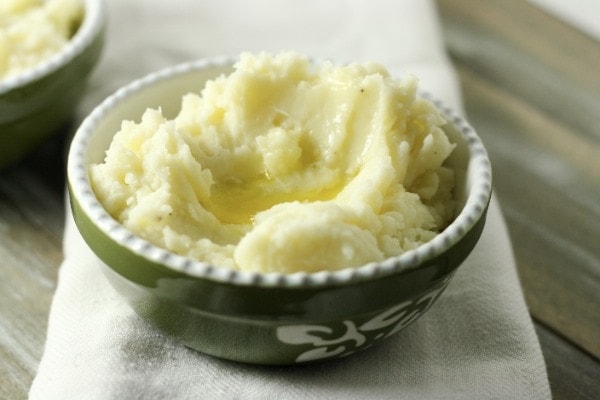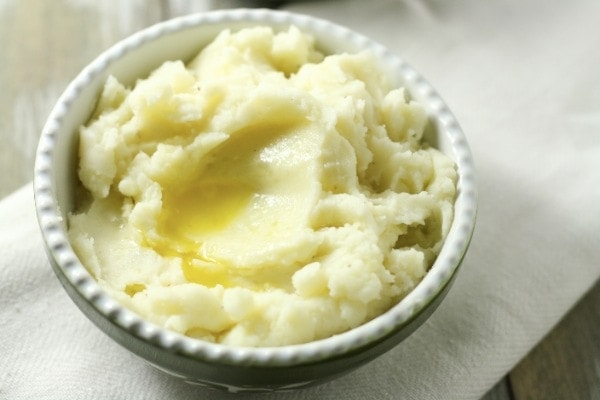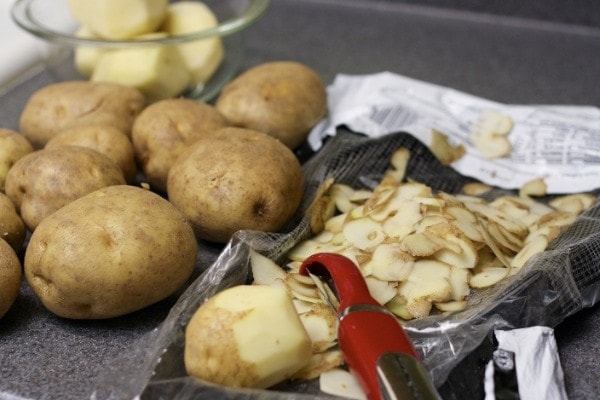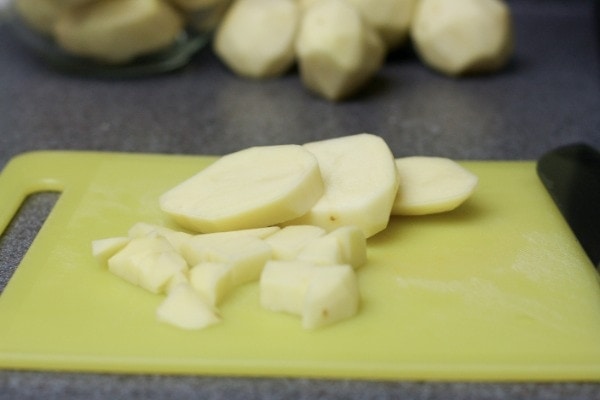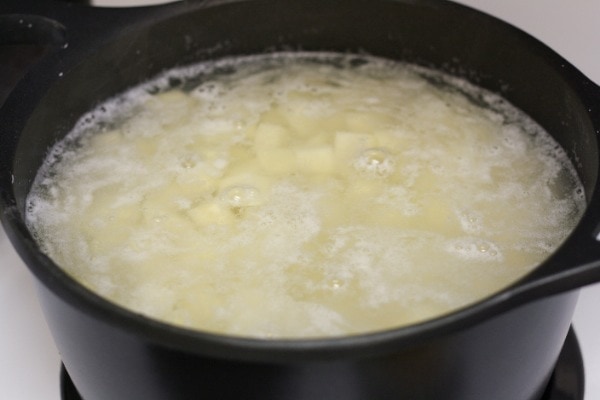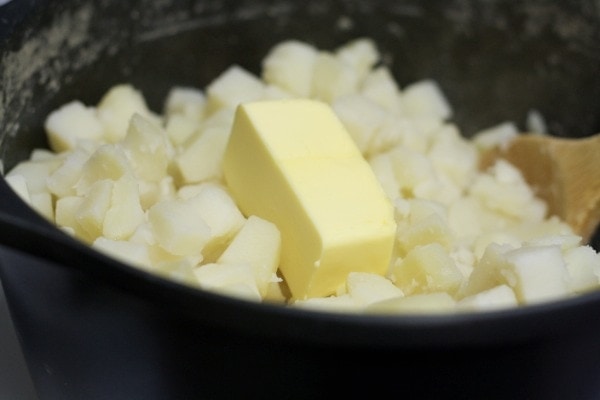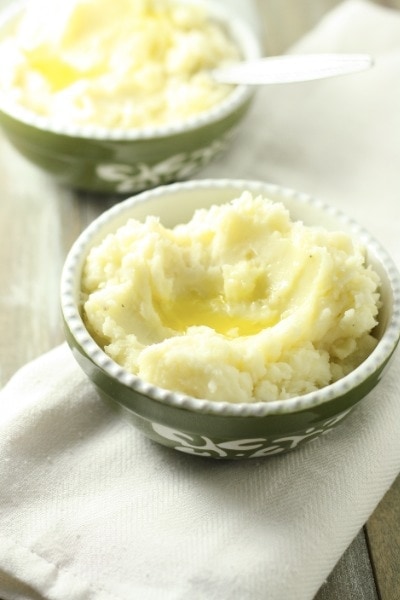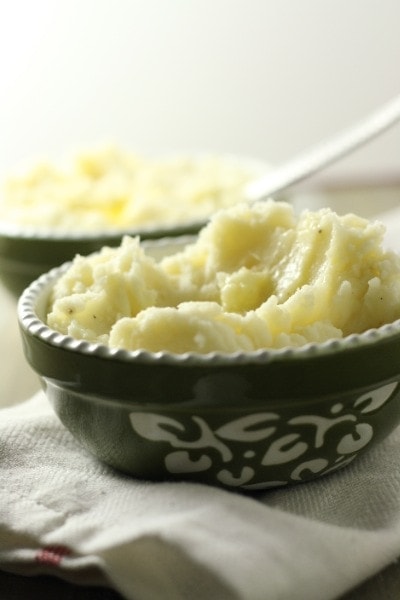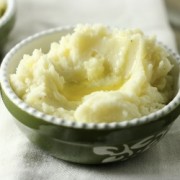Ask Dr. Coconut TM
Dr. Bruce Fife a.k.a. “Dr. Coconut” answers
your questions about coconut, diet, and nutrition.
Which is better for fighting infections, coconut oil or monolaurin?
This is an excellent question. There is a lot of confusion and misunderstanding concerning monolaurin and coconut oil. Monolaurin is a dietary supplement derived from coconut oil. It is used to fight bacterial, viral, and fungal infections. Monolaurin has gained popularity as an effective infection fighter, the most popular brand being Lauricidin®.
To answer this question I need to explain a little bit about the composition of coconut oil. Fats and oils, including coconut oil, are composed of fat molecules called fatty acids. When three fatty acids are joined together by a glycerol molecule, they form a triglyceride. The fats and oils in our diet are all in the form of triglycerides.
When you eat coconut oil, the triglycerides are broken down by separating the fatty acids from the glycerol molecule. Digestive enzymes pull off the fatty acids, one by one. When a triglyceride loses one fatty acid, it becomes a diglyceride. When a triglyceride loses two fatty acids, it becomes a monoglyceride. So, a monoglyceride is a glycerol molecule that is attached to only one fatty acid. When all three fatty acids are removed you have one glycerol molecule completely stripped of its fatty acids.
The predominate fatty acids in coconut oil are “medium chain” fatty acids. There are three medium chain fatty acids (MCFAs): lauric acid, capric acid, and caprylic acid. There are also three monoglycerides formed during digestion: monolaurin, monocaprin, and monocaprylin. All three of the medium chain fatty acids and medium chain monoglycerides possess antimicrobial properties; triglycerides and diglycerides do not.
In general, monolaurin has demonstrated the strongest effect in killing many bacteria, viruses, and fungi. This has led manufacturers to start producing and marketing monolaurin as an antimicrobial dietary supplement. Some of these producers claim that when coconut oil is digested, only a small amount of the oil is converted into monolaurin, and therefore, monolaurin or Lauricidin® is more effective than coconut oil as an antimicrobial agent. In fact, some go so far to say that since coconut oil produces so little monolaurin, it is not really effective in fighting infections. This is not true.
Of the three medium chain fatty acids, lauric acid has shown to be more potent than capric and caprylic acids in killing many microorganisms. Monolaurin, likewise, has shown to be more effective than the other monoglycerides as well as the MCFAs. But this is a broad generalization. There are certain organisms in which monolaurin is not the most effective, while the other monoglycerides or fatty acids work better. You would do better using monocaprin or capric acid on some microorganisms than you would monolaurin. The same is true with all the other fatty acids and monoglycerides.
Monolaurin is a single ingredient. Coconut oil, on the other hand, is a combination of 10 different fatty acids—short, medium, and long—and their monoglycerides, most all of which possess antimicrobial properties. Each one has its strengths and advantages. When combined together they work synergistically to enhance the effectiveness of the total.
Therefore, coconut oil with its 10 fatty acids and 10 monoglycerides has greater potential for fighting infection. In my opinion, coconut oil, as nature made it, is superior to monolaurin alone.
I’ve seen coconut oil work miracles in combating numerous infections (see the following article). As a food, it is safe and easy to use and much cheaper than a dietary supplement. ■
Coconut Oil:
A New Weapon Against AIDS
According to the World Health Organization, in 2004 some 4.9 million people worldwide became infected with human immunodeficiency virus (HIV), which causes AIDS. Last year the total number of people with HIV rose to its highest level ever. An estimated 39.4 million people are currently living with the virus. In the U.S. 40,000 new cases are reported each year.
The problem with treating HIV? Unlike antibiotics that kill bacteria, antiviral drugs can only reduce the severity of infections; they do not eliminate them completely. To date, no drugs have been developed that can effectively eradicate viruses and cure the illnesses they cause.
HIV attacks and weakens the immune system. As the efficiency of the immune system decreases, other viruses, as well as bacteria and fungi, are able to take hold and infect the body. These secondary infections are what cause most of the pain and discomfort, and ultimately the death, of AIDS victims. For this reason, HIV patients are given drug cocktails consisting of a mixture of antibiotics, antiviral and antifungal agents. Anti-cancer drugs are usually included in the mix because the weakened immune system often allows cancer to develop. Adverse reactions and toxic side effects often result.
Over the years medical science has made great strides in AIDS treatment. With the proper treatment and lifestyle choices, life expectancy for HIV-infected individuals has increased. Antiretroviral drugs are able to slow down the progression of the disease. But for the vast majority of HIV-infected people, drug therapy is not a viable option. The cost to control the virus using standard HIV medications for one person can easily amount to over $15,000 US a year. This is far beyond the ability of most of those infected to pay.
Finding a safe and effective, yet affordable, treatment is the only way to bring relief to the millions who suffer from HIV/AIDS. Fortunately, researchers may have now found a potential solution to this problem: coconut oil. Although coconut oil may appear to be an unlikely hero, recent medical research shows that it holds great promise in the treatment of HIV/AIDS.
Coconut oil is composed of a unique group of fats known as medium chain triglycerides (MCTs). When eaten, our bodies transform MCTs into medium chain fatty acids (MCFAs) and monoglycerides, both of which possess powerful antiviral properties. Knowledge of coconut oil’s effect on HIV has been circulating in the AIDS community ever since Icelandic researcher Halldor Thormar began publishing studies on this topic in the early 1990s. Since then, HIV-infected individuals have reported success lowering their viral loads and improving their overall health by adding coconut oil or coconut products into their diets.
AIDS victim Tony V., 38, is one of these success stories. Tony’s experience lends hope to millions of AIDS sufferers worldwide. Coconut oil changed his life and gave him newfound hope.
In the late 1990s Tony worked as a waiter and florist in Saudi Arabia. It was here that he contracted the disease that altered his life. Coming home to the Philippines in 2002, Tony was devastated to learn that he was infected with HIV.
As time progressed, Tony’s health slowly deteriorated. Secondary infections ravaged his body. By July 2003, mounting health problems brought him to the hospital.
The drugs he was taking could not stop the progression of the disease. His body was covered with fungal infections and skin lesions, he was losing weight, and had repeated bouts of vomiting and diarrhea accompanied by fever, chronic fatigue, oral candidiasis, and various other infections including chronic pneumonia with a persistent cough. Skin infections covered his head, face, and body. His doctor diagnosed him with full-blown AIDS and told him to get his affairs in order.
He was released from the hospital with prescriptions to keep the infections in check that were still raging in his body. But because he was too sick to work, he could not afford to buy the medications. Feelings of hopelessness surrounded him. “I felt like a candle that was starting to flicker and die,” he said.
Unable to afford medication, he sought help from the Department of Health. He was referred to Dr. Conrado Dayrit, the author of the first clinical study on the healing effects of coconut oil on HIV-infected patients, which was conducted at the San Lazaro hospital in the Philippines.
Dr. Dayrit told him about the healing virtues of coconut oil. Tony was instructed to apply the oil to the sores and infections on his skin three times a day and consume six tablespoonfuls daily. At first, Tony was skeptical that coconut oil would have much of an effect on his health. He had a small wound on his foot that refused to heal, so he experimented by putting a little oil on it every day. After three days the wound was completely healed. Encouraged by the results, he began the coconut oil regimen in earnest.
Within a short time noticeable changes were seen in Tony’s appearance. As he realized the healing that was beginning to happen to his skin, he started to “bathe” in the oil, applying it from head to toe three times daily. The skin infections faded.
When Tony went to the hospital for his periodic blood tests the doctors were amazed. “They were all excited and couldn’t understand what was happening,” says Tony. “They asked me what I was taking. I told them I was using coconut oil.” They couldn’t believe that something as simple as coconut oil was killing the virus and infections better than their drugs.
HIV attacks white bloods cells known as T4 cells. The severity of the virus can be determined by measuring the number of T4 cells in the body. This is called a CD4 count. On average, a healthy individual will have a CD4 count between 535 and 1,145. HIV infected individuals usually have CD4 levels below normal. As the disease progresses, CD4 levels continue to drop.
Tony’s CD4 count on diagnosis was 270. A year later when he was admitted to the emergency room, it had fallen to 226. After using coconut oil for a few months it rebounded to 274, still low but steadily rising — a clear sign he was improving!
His progress was remarkable. His skin completely healed. The low-grade fever and symptoms of pneumonia are now gone. Candidiasis gone. Chronic fatigue gone. Diarrhea and vomiting gone. You couldn’t tell by his appearance that just a few months earlier he had been diagnosed with AIDS. Although Tony may never be completely free from the virus, he can at least live a more normal life and enjoy day-to-day activities.
The social workers and the medical staff handling his case, impressed by his rapid improvement, are now using coconut oil themselves for general health purposes.
Less than nine months after starting the coconut oil odyssey, Tony stood for the first time before an audience to tell his story. “HIV virus has not been curable until now,” he said. “The antiretrovirals cannot control the infection, which is why a lot of my friends died. Doctors cannot predict how long I will live. When I was diagnosed, my doctors told me I wouldn’t live another three months. Well, here I am now. I’m still standing. Maybe I have a mission to share my experience with all whom I meet.
“People like me who have HIV/AIDS are scared. But you don’t need to be afraid now. Years ago tuberculosis was a worldwide epidemic, but eventually they found the cure. For HIV, maybe virgin coconut oil is the solution the world has been looking for.”
Viruses that are the most vulnerable to the killing action of medium chain fatty acids (MCFAs) in coconut oil are those which are encased in a lipid membrane. When MCFAs come into contact with these viruses, they are
|
|
absorbed into their outermembranes, destabilizing them to the point that the membrane disintegrates, killing the organism. HIV has a lipid coat, thus making it vulnerable to the action of MCFAs. Studies have shown that when MCFAs are added to human blood and semen infected with HIV, the virus is effectively killed. Dr. Thormar and colleagues report that MCFAs formulated into a hydrogel for effective delivery are “highly virucidal in vitro and cause a greater than 100,000-fold inactivation of viruses in human semen in 1 minute.” The researchers add that they are “potent inactivators of sexually transmitted viruses.”
Viruses that are the most vulnerable to the killing action of medium chain fatty acids (MCFA) in coconut oil are those which are encased in a lipid membrane. When MCFA come into contact with these viruses, they are absorbed into their outer membranes, destabilizing them to the point that the membrane disintegrates, killing the
|
Testimonial by AIDS sufferer Tony extols the virtues of virgin coconut oil.
|
|
organism. HIV has a lipid coat, thus making it vulnerable to the action of MCFA. Studies have shown that when MCFA are added to human blood and semen infected with HIV, the virus is effectively killed. Dr. Thormar and colleagues report that MCFA formulated into a hydrogel for effective delivery are “highly virucidal in vitro and cause a greater than 100,000-fold inactivation of viruses in human seamen in 1 minute.” The researchers add that they are “potent inactivators of sexually transmitted viruses.”
Studies have shown that MCFA are not only effective at killing HIV but also a large number of lipid-coated viruses that cause a number of diseases, including the measles virus, herpes simplex virus, hepatitis C, stomatitis virus (VSV), and cytomegalovirus (CMV). MCFA also kill lipid-coated bacteria as well as some fungi and parasites, including Chlamydia trachomatis, Neisseria gonorrhoeae, Staphylococcus aureus, Helicobacter pylori, Candida albicans, and giardia.
Coconut oil is composed predominately of MCFAs and also alleviates many of the opportunistic infections that commonly afflict AIDS patients. Unlike the drug cocktails used to treat HIV/AIDS, coconut oil is a completely harmless, natural product that has been used safely as a food for thousands of years. It has no harmful side effects.
Some of the most common symptoms associated with AIDS include chronic diarrhea, fat malabsorption, malnutrition, weight loss, wasting, and various complications with secondary infections. Studies have reported significant improvement in all of these conditions when patients are given diets containing coconut oil or medium chain triglycerides. For instance, C.A. Wanke and colleagues took 24 adult patients with HIV who were suffering from chronic diarrhea, fat malabsorption, and weight loss. Patients were randomly assigned to one of two groups. Medium chain triglycerides were added to the diet of one group. The other group served as the control. The researchers reported that those that received the MCT demonstrated significantly decreased stool number, stool fat, and stool weight, indicating a marked improvement in their nutritional statues. With better nutrient absorption comes improved health and better immune function. P. Gelas and colleagues report that along with improved digestion and weight gain, CD4/CD8 lymphocyte ratios also improve in MCT-fed patients, indicating improved immune function.
The organization Keep Hope Alive has documented several cases in which HIV/AIDS patients have reported marked improvement after consuming coconut products. In some cases all evidence of the infection were removed. For example, one man dropped his viral load from 600,000 to non-detectable levels in just 2 months by consuming a bowl of coconut and cooked cereal every day along with eating a healthy diet containing lots of fresh fruits and vegetables. He was not using any antiviral drugs.
In a second case, a person with a viral load of 900,000 ate half a coconut a day. After 4 weeks, his viral load dropped to around 350,000. After the second month, his viral load remained the same and his doctor added the drug Crixivan to his protocol. After 4 weeks, his viral load dropped to non-detectable levels. Unlike the first case cited above, this person ate a typical American diet that included ample amounts of junk food. His progress would have been quicker with a better diet.
In another case, a man consumed a glass of coconut milk daily for 4 weeks. His viral load for HIV dropped from 30,000 to 7,000. Both his CD4 and CD8 counts doubled. He used no antivirals.
The first clinical study using coconut on HIV-patients was reported by Conrado Dayrit, MD, in 1999. In this study 14 HIV infected individuals were given daily 3 tablespoons of coconut oil or monolaurin (coconut oil derived dietary supplement). No other antivirals or treatment were used. Six months later 60 percent of the participants showed noticeable signs of improvement. Improvement was measured by increased CD4 count, lowered viral load, and better overall health. This was the first study to demonstrate in a clinical setting that coconut oil does have an antiviral impact and could be used successfully to treat HIV-infected individuals.
The amount of coconut oil used is important. The higher the dosage, the more effective it is in deactivating the virus and other pathogenic organisms. The participants in Dr. Dayrit’s study consumed only 3½ tablespoons a day; Tony consumed 6 tablespoons. Case histories of those who have used coconut oil with other therapies indicate that diet and lifestyle are also important. Eating a healthy diet and avoiding junk foods helps strengthen the immune system and improves the success rate. An ample amount of coconut oil combined with a healthy diet looks promising as a safe and affordable treatment for HIV.
Since coconuts can grow in many of areas of the world where HIV is a major health problem, coconut oil appears to be a feasible and exciting solution to this worldwide epidemic. ■
Selected References
Craig, G.B., et al. Decreased fat and nitrogen losses in patients with AIDS receiving medium-chain-triglyceride-enriched formula vs those receiving long-chain-triglyceride-containing formula. J Am Diet Assoc 1997;97:605-611.
Gelas, P., et al. Effect of parenteral medium- and long-chain triglycerides on lymphocytes subpopulations and functions in patients with acquired immunodeficiency syndrome: a prospective study. JPEN J Parenter Enteral Nutr1998;22:67-71.
Hierholzer, J.C. and Kabara, J.J. In vitro effects of monolaurin compounds on enveloped RNA and DNA viruses. Journal of Food Safety 1982;4:1-12.
Isaacs, C.E., Litov, R.E., Marie, P., Thormar, H. Addition of lipases to infant formulas produces antiviral and antibacterial activity. Journal of Nutritional Biochemistry1992;3:304-308.
Isaacs, C.E., et al. Inactivation of enveloped viruses in human bodily fluids by purified lipids. Ann NY Acad Sci 1994;724:457-464.
Kabara, J.J. Antimicrobial agents derived from fatty acids. Journal of the American Oil Chemists Society 1984;61:397-403.
Kristmundsdottir, T., et al. Development and evaluation of microbicidal hydrogels containing monoglycerides as the active ingredient. J Pharm Sci 1999;88(10):1011-1015.
Neyts, J., et al. Hydrogels containing monocaprin prevent intravaginal and intracutaneous infections with HSV-2 in mice: impact on the search for vaginal microbicides. J Med Virol 2000;61(1):107-110.
Salomon, S.B., et al. An elemental diet containing medium-chain triglycerides and enzymatically hydrolyzed protein can improve gastrointestinal tolerance in people infected with HIV. J Am Diet Assoc 1998;98:460-462.
Sathiravikarn, W., et al. Mycobacterium tuberculosis associated chylous ascites in HIV-infected patients: case report and review of the literature. Infection 2006;34:230-233.
Thormar, H., et al. Inactivation of enveloped viruses and killing of cells by fatty acids and monoglycerides. Antimicrob Agents Chemother 1987;31(1):27-31.
Thormar, H., et al. Inactivation of visna virus and other enveloped viruses by free fatty acids and monoglycerides. Ann NY Acad Sci 1994;724:465-471.
Thormar, H., et al. Hydrogels containing monocaprin have potent microbicidal activities against sexually transmitted viruses and bacteria in vitro. Sex Transm Infect 1999;75(3):181-185.
Vazquez, C., et al. Eucaloric substitution of medium chain triglycerides for dietary long chain fatty acids improves body composition and lipid profile in a patient with human immunodeficiency virus lipodystrophy. Nutr Hosp 2006;21:552-555.
Wanke, C.A., et al. A medium chain triglyceride-based diet in patients with HIV and chronic diarrhea reduces diarrhea and malabsorption: a prospective, controlled trial.Nutrition 1996;12:766-771.
Asperger’s Disorder:
Success with Coconut Oil and Dietary Intervention
By Renee Osterhouse
In February, 2007, we discovered one of our children had Asperger’s disorder. A blessing in a way; it answered many of the questions we had regarding our child’s behavior. Asperger’s is an autism spectrum disorder (ASD). This discovery opened a door that is leading our daughter to wellness, a path that has improved the entire family’s health.
Asperger’s disorder is a form of autism. Her list of symptoms went on forever: brain fog, lethargy, sinusitis, headaches, stomach aches, repetitive speech patterns, eyes darting, at times unresponsive, and hearing difficulties. She also had gross and fine motor skill difficulties. The worst though, was the meltdowns. They were like emotional break-downs that she clearly couldn’t control and would occur at least every other day.
In trying to establish what was causing her symptoms, we had removed all preservatives and hydrogenated oils. We updated the ducts in our air conditioning and threw out all of our non-stick cookware, in her bedroom was an air purifier, and we started drinking water free of fluoride and chlorine. We avoided refined sugars and artificial coloring as well.
Beginning to scratch the surface of a healthier cleaner life, my husband was diagnosed with cancer. We all started taking whole food supplements which became a nutritional anchor for all of us. A few weeks after his last treatment we found out our daughters issues were explained by Asperger’s disorder. What seemed to be blow after blow really pushed us further toward a truly healing way of life. When I started researching ASD it didn't take long before I learned of gluten and casein and their link to autism. I found the book Feast Without Yeast: 4 Stages to Better Health, by Dr. Bruce Seman and Lori Kornblum and learned more about yeast/candida overpopulations.
I wanted to investigate how to naturally reduce and maintain the level of candida. Already pleased with our success with this dietary intervention, it was difficult to hope our daughter could get much better. Then I found Bruce Fife’s book, Coconut Cures: Preventing and Treating Common Health Problems with Coconut. I learned of coconut oil and its healing benefits, as well as its ability to restore balance in the gut by controlling candida.
With this new information we added 3-5 tablespoons of coconut oil to our daughter’s diet. Our dietary intervention program consists of gluten free, casein free, and yeast free, along with avoiding/limiting refined carbohydrates. Within a week we noticed a new level of clarity. It seemed to clear away the rest of the cobwebs. Her speech improved rapidly, her vocabulary skyrocketed, and her physically painful symptoms became intermittent and controllable. Her hearing is normal. She initiates conversations and people are able to engage her in conversations as well. For the first time in her life, she was able to complete homework on her own and was an honor roll student throughout the school year.
Before, when she would read, her eyes would dart all over the page picking up words that were at the bottom and inserting them where they didn’t belong. It naturally wouldn’t make any sense so she would have to re-read each sentence. After two pages she was exhausted and confused. Dietary intervention along with coconut oil has given her a new life. Now, she will read for hours if we let her. ■
Based on the principles she has learned by dealing with her family’s health issues Renee Osterhouse created Nourish to Flourish—a Healthy Home Center. She offers services and support as well as a growing inventory of products and books, including those mentioned above. She invites readers to visit her website at www.NourishToFlourish.net and appreciates any comments. Her store is located at 208 N. Woodland Blvd., DeLand, Florida. You can contact her atreneeo@bellsouth.net or call the store at (386) 736-2001.
|




